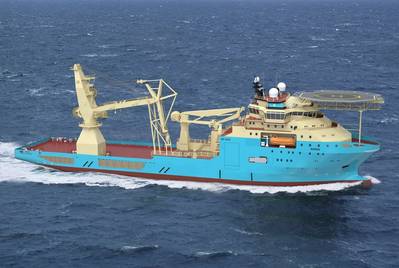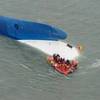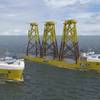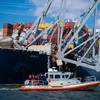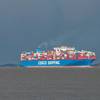In December 2014, Huisman secured a contract from COSCO (Dalian) Shipyard for the delivery of four customized 400mt Rope Luffing Knuckle Boom Cranes and two 100mt Knuckle Boom Cranes onboard four new subsea support vessels (SSVs) for Maersk Supply Service. The first vessels, Marin Teknikk design MT 6027, are scheduled for delivery in Q4 2016.
The contract between COSCO (Dalian) Shipyard and Huisman contains an optional scope for two 400mt Rope Luffing Knuckle Boom Cranes for two additional vessels. Huisman’s sister company SMST will deliver the two 100mt Knuckle Boom Cranes with options for four more cranes. The components for the four Rope Luffing Knuckle Boom Cranes will be built at the Huisman facilities in China, the Netherlands as well as in Czech Republic. They will be transported to the COSCO Shipyard in Dalian, China for final installation, commissioning and testing onboard.
Huisman said the new patented Rope Luffing Knuckle Boom Crane is especially designed for subsea installations in increasingly deeper water and offshore construction in severe weather conditions. The active heave compensated (AHC) cranes combine the benefits of a normal Rope Luffing Crane and a traditional Knuckle Boom Crane, offering a low overall construction weight, high lifting height and large capacity at outreach.
Huisman’s Rope Luffing Knuckle Boom design resulted in a much lighter boom, enabling superior load curves, the manufacturer said, adding that this allows the crane operator to pick up large loads at larger radii, optimizing the capacity at outreach and increasing the size and number of modules that can be installed from the SSV’s own deck. The main hoisting system is comprised of a traction and storage winch system and a separate heave compensation system. This means both lifting/lowering and heave compensation can be performed simultaneously with no performance interdependency. The below deck heave compensation system includes a passive component with an integrated gas spring that functions as a shock absorber while, for instance, lowering through the splash zone.



